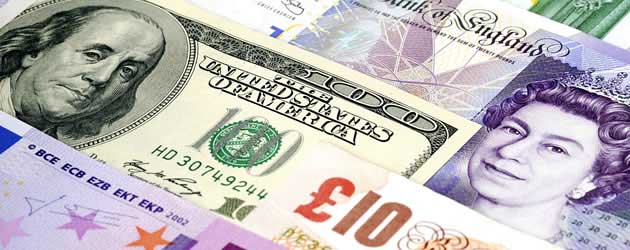
The Pound to US Dollar exchange rate (GBP/USD) increased by around -3.0 cents in the immediate aftermath of last night’s policy statement from Federal Reserve Chairman Ben Bernanke. GBP/USD struck a daily high of 1.5194 as markets reacted to the possibility of QE3 continuing in the United States.
With UK trade data printing underwhelmingly and British Industrial Production stalling over the past week sentiment towards Sterling had plunged, allowing the US Dollar to force GBP/USD to a 3-year low of 1.4813. However, the Pound’s downtrend against the US Dollar came to a halt last night as Ben Bernanke said that US Unemployment was too high, and US inflation too low, for a tightening of monetary policy: “both sides of our mandate are saying we need to be more accommodative”.
The Fed Chairman noted that financial conditions have tightened and suggested that monetary easing measures could persist “for the remainder of the year and [into] next year” if higher market interest rates lead to slowing inflation or rising joblessness.
The surprisingly dovish statement contrasted with the optimistic rhetoric from June 19th when Bernanke hinted that a tapering of asset purchases would begin in the near future and suggested that QE3 would be finished by the middle of 2014. It now seems that the Fed is determined to keep a “forecast-based” policy with regards to monetary easing, staying true to the US Central Bank’s dual mandate to bring Unemployment below 6.5% and maintain price stability with inflation close to 2.0% but below 2.5%.
“If you put all of that together, you can only conclude that highly accommodative monetary policy for the foreseeable future is what is needed for the US economy”, said Bernanke.
Low interest rates and asset purchases devalue the US Dollar because they lead to softer yield returns on US Treasuries, which weakens demand for the US currency.
In response to the Bernanke press conference the US Dollar stalled massively: declining by -3.0 cents against the Euro and the Pound; falling -2.0 cents against the Japanese Yen; tumbling -1.4 cents against the Canadian Dollar; plunging -1.8 cents against the Australian Dollar; and losing out on -1.6 cents against the New Zealand Dollar.
The US Dollar has since consolidated slightly against each of these currencies but still remains significantly weaker than before Bernanke’s comments.
In terms of GBP/USD, the outlook remains mired in confusion as markets await the necessary information regarding the Bank of England’s plans for monetary policy. With British PMI data expanding rapidly at the moment Sterling should be able to sustain itself above psychologically significant support at 1.5000 as long as the BoE does not embark on another round of asset purchases. The latest release from the UK Central Bank, however, suggested that enhanced monetary easing is a serious possibility, due to the perceived weakness of the current economic revival by historical standards. Any indication that Mark Carney and co. are considering loosening policy further could lead to serious losses for the Pound against the US Dollar.

Comments are closed.